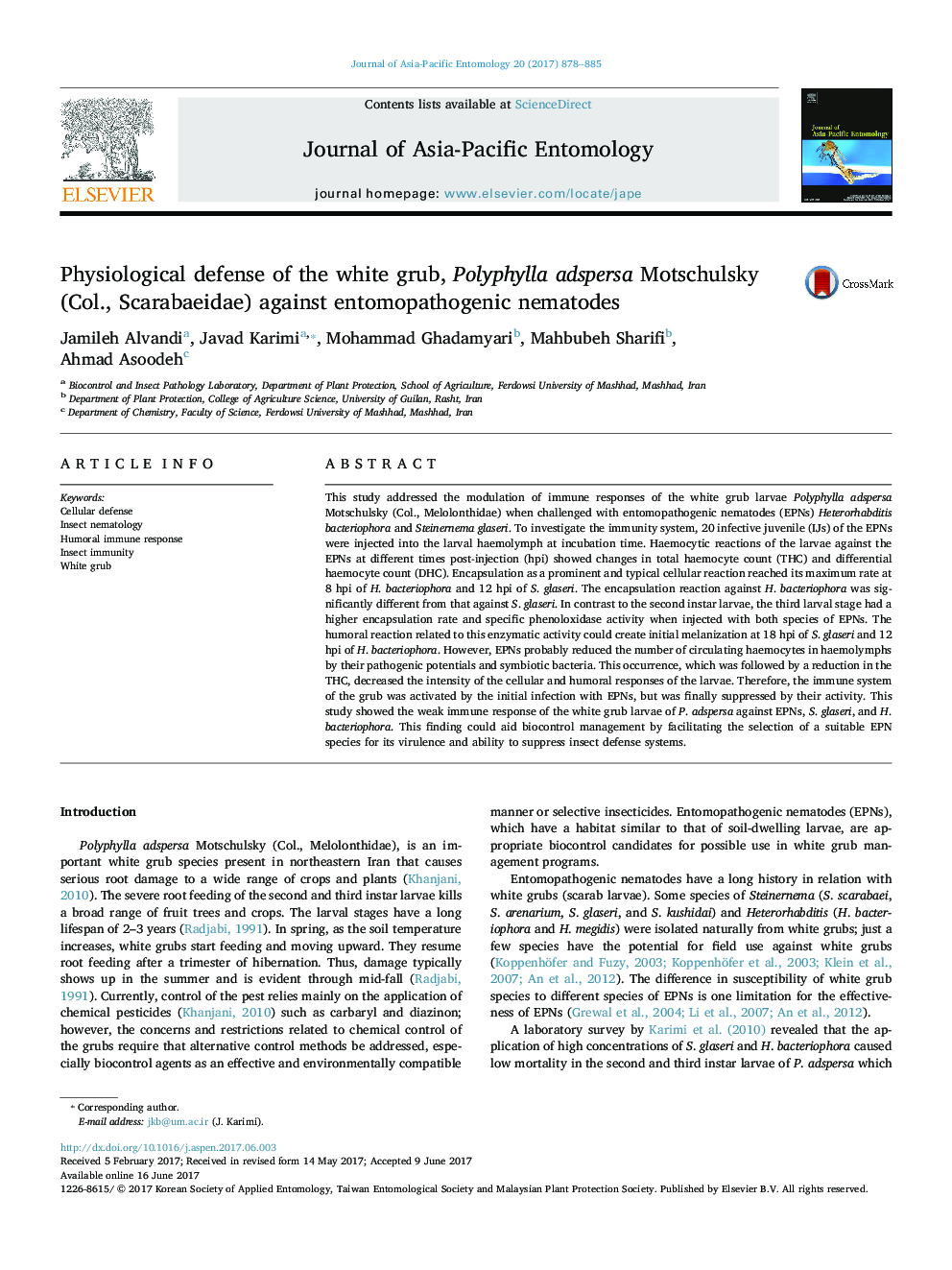| کد مقاله | کد نشریه | سال انتشار | مقاله انگلیسی | نسخه تمام متن |
|---|---|---|---|---|
| 5763522 | 1412973 | 2017 | 8 صفحه PDF | دانلود رایگان |

- Main defense elements of Polyphylla adspersa against entomopathogenic nematode and their symbiotic bacterium are addressed.
- Plasmatocytes and granulocytes have critical role againsts nematode infection.
- This is the first work on humoral defense reaction of Polyphylla adspersa.
- Cross-talk among cellular and humoral defenses of Polyphylla adspersa against an invader was confirmed.
This study addressed the modulation of immune responses of the white grub larvae Polyphylla adspersa Motschulsky (Col., Melolonthidae) when challenged with entomopathogenic nematodes (EPNs) Heterorhabditis bacteriophora and Steinernema glaseri. To investigate the immunity system, 20 infective juvenile (IJs) of the EPNs were injected into the larval haemolymph at incubation time. Haemocytic reactions of the larvae against the EPNs at different times post-injection (hpi) showed changes in total haemocyte count (THC) and differential haemocyte count (DHC). Encapsulation as a prominent and typical cellular reaction reached its maximum rate at 8 hpi of H. bacteriophora and 12 hpi of S. glaseri. The encapsulation reaction against H. bacteriophora was significantly different from that against S. glaseri. In contrast to the second instar larvae, the third larval stage had a higher encapsulation rate and specific phenoloxidase activity when injected with both species of EPNs. The humoral reaction related to this enzymatic activity could create initial melanization at 18 hpi of S. glaseri and 12 hpi of H. bacteriophora. However, EPNs probably reduced the number of circulating haemocytes in haemolymphs by their pathogenic potentials and symbiotic bacteria. This occurrence, which was followed by a reduction in the THC, decreased the intensity of the cellular and humoral responses of the larvae. Therefore, the immune system of the grub was activated by the initial infection with EPNs, but was finally suppressed by their activity. This study showed the weak immune response of the white grub larvae of P. adspersa against EPNs, S. glaseri, and H. bacteriophora. This finding could aid biocontrol management by facilitating the selection of a suitable EPN species for its virulence and ability to suppress insect defense systems.
147
Journal: Journal of Asia-Pacific Entomology - Volume 20, Issue 3, September 2017, Pages 878-885